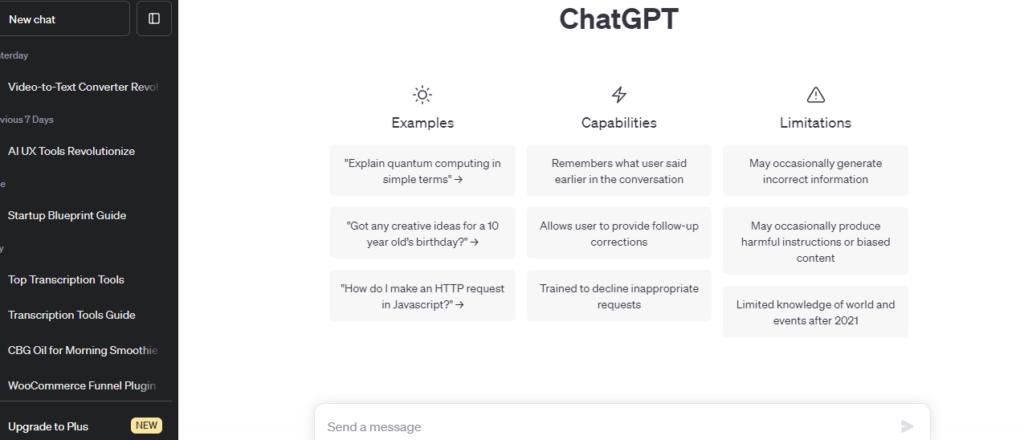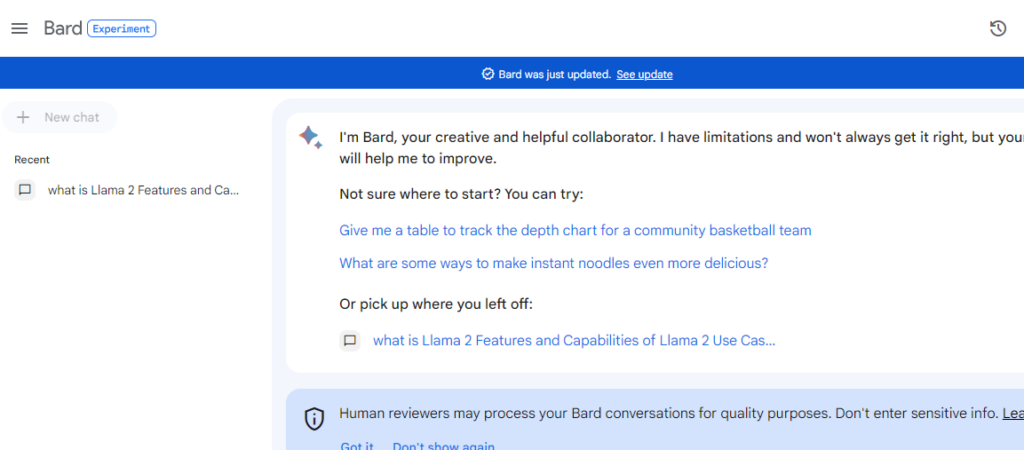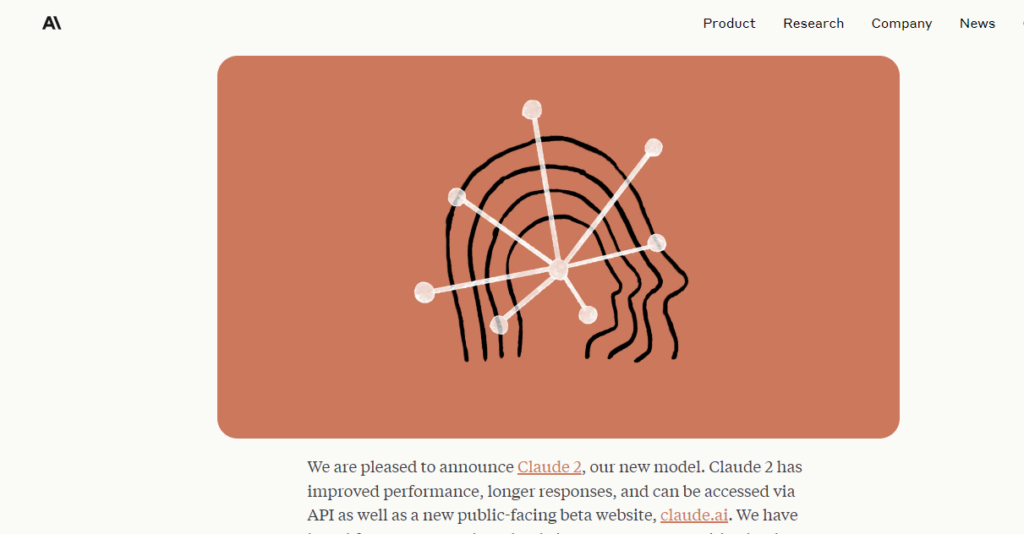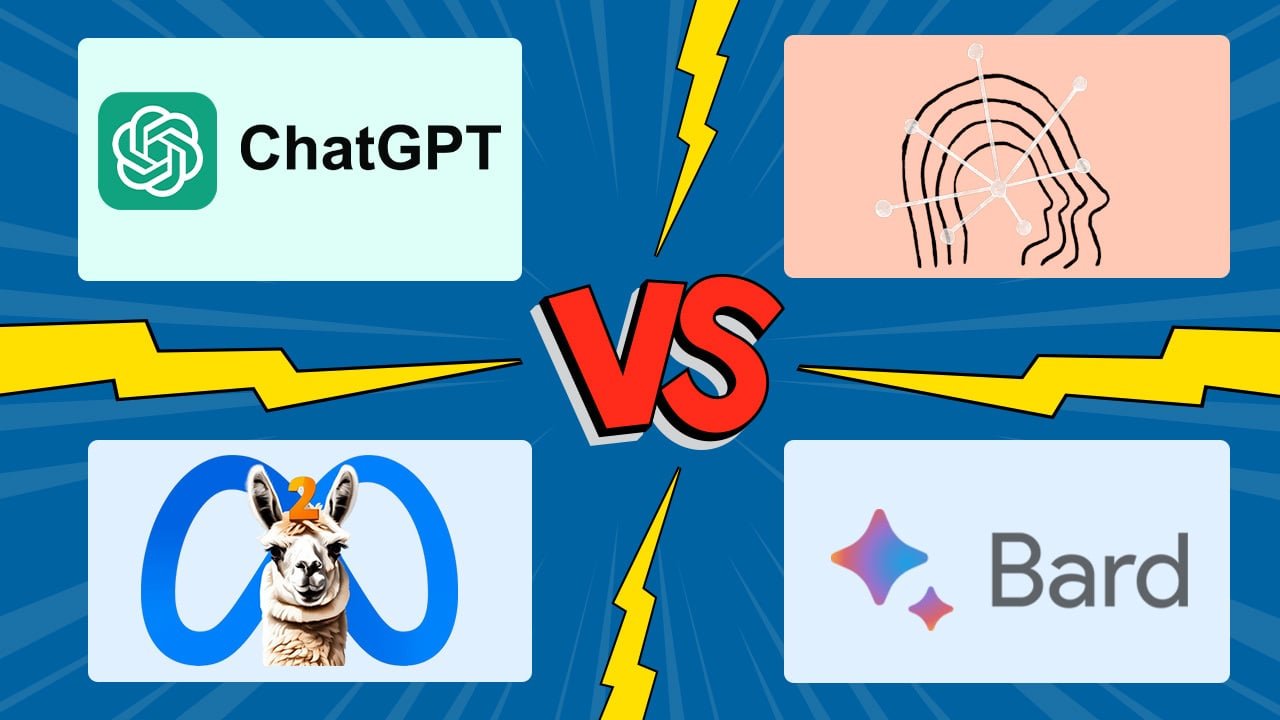In the world of AI language models, there are several impressive contenders that have captured the attention of users and developers alike. ChatGPT, Bard, Claude 2, and Llama 2 are among the leading language models developed by OpenAI, Hugging Face, EleutherAI, and others. These models are designed to understand and generate human-like text, making them valuable assets for various applications, including natural language processing, content generation, and more. In this comparison, we will explore the strengths and capabilities of each language model to help you understand which one suits your specific needs best. Let’s delve into the fascinating world of ChatGPT, Bard, Claude 2, and Llama 2 to see how they stack up against each other in the realm of AI language models.
Table of Contents
ToggleUnderstanding the AI-Language Models
1. ChatGPT

ChatGPT, powered by the GPT-3 language model developed by OpenAI, boasts a wide range of features and capabilities that make it a versatile and powerful tool for natural language processing.
Features and Capabilities of Bard:
Some of its key features include:
- Natural Language Understanding: ChatGPT can comprehend and interpret human language, making it capable of understanding context and contextually relevant responses.
- Contextual Awareness: The model maintains context throughout conversations, enabling it to provide more coherent and accurate responses.
- Multilingual Support: ChatGPT can understand and generate text in multiple languages, making it suitable for global applications.
- Creative Content Generation: With its vast training data, ChatGPT can generate creative and engaging text, including stories, poetry, and fictional dialogues.
- Problem-Solving: The model can perform reasoning tasks, solve puzzles, and provide answers to complex questions.
- Text Summarization: ChatGPT can condense lengthy texts into concise summaries, making it useful for content curation and information extraction.
Also Read: Do I Need WooCommerce to Use LearnDash?
Use Cases and Applications
ChatGPT’s versatility extends to a wide range of use cases and applications across various industries:
- Customer Support: Businesses can deploy ChatGPT as a virtual customer support agent, answering queries and providing instant assistance.
- Content Creation: ChatGPT can help writers and content creators brainstorm ideas, generate content outlines, and assist in drafting articles and blog posts.
- Language Translation: The model can aid in real-time translation and localization of content into different languages.
- Programming Assistance: ChatGPT can be utilized as a coding companion, offering code snippets and explanations for programming queries.
- Educational Tool: ChatGPT can serve as a tutoring tool, helping students with explanations and clarifications in various subjects.
- Language Learning: It can facilitate language learning by providing practice conversations and vocabulary explanations.
- Gaming: Developers can integrate ChatGPT into interactive storytelling and role-playing games, creating engaging virtual characters.
- Virtual Assistants: ChatGPT can be the foundation for personalized virtual assistants that assist with daily tasks and scheduling.
- Therapy and Mental Health Support: The model can be used as a supportive tool in therapy sessions or for mental health check-ins.
- Writing Enhancement: ChatGPT can proofread and provide suggestions to enhance writing quality.
2. Bard

Bard is an advanced AI language model developed by OpenAI. It is based on the GPT-3 architecture, which uses transformer-based neural networks and attention mechanisms to process and generate human-like text.
Features and Capabilities of Bard:
- Creative Content Generation: Bard is designed to excel in generating creative and engaging content, making it a powerful tool for writers, marketers, and content creators. It can produce compelling narratives, captivating stories, and imaginative text that resonate with audiences.
- Natural Language Understanding: With its advanced natural language understanding capabilities, Bard can comprehend and interpret context, tone, and intent, enabling more accurate responses and contextually relevant output.
- Multilingual Proficiency: Bard supports multiple languages, allowing users to communicate and generate content in various linguistic contexts, making it a versatile solution for global communication and content localization.
- Contextual Adaptation: Bard can maintain coherence and context across extended conversations, making it ideal for chatbots, virtual assistants, and interactive applications that require continuity and natural flow.
- Text Completion and Suggestion: Bard offers intelligent text completion and suggestion features, assisting writers in overcoming writer’s block and generating ideas for their content.
- Personalization: The AI model can adapt to user preferences and writing styles, tailoring its responses and content generation to suit individual needs and brand personas.
Also Read: Unleashing Automation in Email Marketing: The Benefits and Drawbacks
Use Cases and Applications of Bard:
- Content Creation and Writing Assistance: Bard can be used by content creators, bloggers, and authors to generate high-quality articles, blog posts, and creative writing pieces, saving time and enhancing productivity.
- Marketing and Social Media: Bard’s ability to create engaging and persuasive content makes it valuable for social media posts, email marketing campaigns, and ad copywriting, helping businesses capture and retain audience attention.
- Interactive Storytelling: With its narrative generation capabilities, Bard is well-suited for creating interactive storytelling experiences, interactive games, and narrative-driven applications.
- Chatbots and Virtual Assistants: Bard can power chatbots and virtual assistants, providing a more natural and conversational user experience for customer support, information retrieval, and personalized assistance.
- Language Translation and Localization: Bard’s multilingual proficiency makes it useful for language translation tasks, facilitating communication across language barriers and enabling content localization for international audiences.
- E-learning and Educational Applications: Bard can assist in generating educational content, including quizzes, exercises, and explanations, supporting the development of e-learning platforms and educational materials.
- Personalized Recommendations: Bard can provide personalized recommendations for products, services, or content based on user preferences and historical data, enhancing user experiences on various platforms.
3. Claude 2

Claude 2 is an advanced AI language model developed by an innovative research team. It is built on cutting-edge transformer-based architecture and utilizes state-of-the-art natural language processing (NLP) techniques to understand and generate human-like text.
Features and Capabilities of Claude 2:
- Natural Language Understanding (NLU): Claude 2 can comprehend and interpret human language, enabling it to analyze text, extract information, and understand context.
- Contextual Understanding: The model is contextually aware, allowing it to maintain continuity and coherence in conversations and text generation.
- Multilingual Proficiency: Claude 2 has been trained on diverse language datasets, making it proficient in multiple languages and suitable for cross-lingual applications.
- Summarization: The AI language model can summarize lengthy documents or articles, condensing information while preserving the core ideas.
- Sentiment Analysis: Claude 2 can determine the sentiment or emotional tone expressed in a text, which is useful for sentiment-based applications and customer feedback analysis.
Also Read: How to Sell Wedding Photography and Videography Services Online with Woo Sell Services
Use Cases and Applications:
- Content Creation: Claude 2 can be employed to generate high-quality written content for various industries, including marketing materials, blog posts, and social media updates.
- Customer Support Chatbots: The model’s NLU capabilities make it well-suited for developing interactive and intelligent chatbots to handle customer queries and provide real-time support.
- Language Translation: Claude 2’s multilingual proficiency allows it to excel in language translation tasks, aiding cross-border communication and global businesses.
- Text Analysis in Research: Researchers and academics can use Claude 2 for analyzing large volumes of text data, extracting insights, and identifying patterns in academic papers or research articles.
- Virtual Assistants: The model can power virtual assistants, providing personalized responses and facilitating natural conversations with users.
- Sentiment Analysis in Market Research: Companies can utilize Claude 2 to gauge customer sentiment from social media posts, product reviews, and customer feedback, aiding in market research and product improvements.
Also Read: How To Sell Social Media Influencer Marketing Services Online with Woo Sell Services?
4. Llama 2

Llama 2 is a large language model (LLM) developed by Meta AI. It is a successor to the original Llama model, and it is designed to be more powerful and versatile. Llama 2 is available in three sizes: 7 billion, 13 billion, and 70 billion parameters. The number of parameters in a model generally correlates with its performance and accuracy, but larger models require more computational resources and data to train.
Features and Capabilities of Llama 2
- The ability to generate text, translate languages, write different kinds of creative content, and answer your questions in an informative way.
- The ability to learn from new data and improve its performance over time.
- The ability to be customized to meet the specific needs of different users and applications.
Also Read: Yoast SEO vs Premium SEO Pack vs Rank Math:Which WordPress SEO Plugin Is Best?
Use Cases and Applications:
- Chatbots
- Virtual assistants
- Content generation
- Translation
- Data analysis
- Research
- Education
Llama 2 is still under development, but it has the potential to revolutionize the way we interact with computers and the way we use language. It is a powerful tool that can be used to create a wide variety of applications.
Also Read: Top 10 Best Map Drawing Software For 2024
Here is how they did on:
1. Critical thinking
- ChatGPT: Capable of processing and analyzing information to generate relevant responses, but may lack depth and nuance in critical thinking tasks.
- Bard: Demonstrates more advanced critical thinking capabilities by understanding context and producing insightful and well-reasoned responses.
- Claude 2: Possesses a higher level of critical thinking with domain-specific knowledge, making it suitable for complex problem-solving tasks.
- Llama 2: Shows exceptional critical thinking abilities, providing thoughtful and well-structured responses to challenging questions.
2. Simple math
- ChatGPT: Can perform basic arithmetic calculations, such as addition and subtraction, but may struggle with more complex math problems.
- Bard: Competent in handling simple math equations and calculations accurately.
- Claude 2: Exhibits strong math skills, capable of solving more advanced math problems involving algebra and basic calculus.
- Llama 2: Proficient in complex math operations and can tackle challenging mathematical concepts with ease.
3. Programming
- ChatGPT: Limited programming knowledge and understanding; might provide basic programming concepts but lacks the ability to execute code.
- Bard: Shows some familiarity with programming languages and concepts, but not ideal for practical coding tasks.
- Claude 2: More proficient in programming languages and capable of executing code snippets to some extent.
- Llama 2: Demonstrates a high level of programming expertise and can execute complex code, making it suitable for programming-related tasks.
4. Riddles
- ChatGPT: Able to understand and respond to straightforward riddles but might struggle with more complex or ambiguous ones.
- Bard: Competent in solving and generating creative riddles, providing entertaining and engaging responses.
- Claude 2: Can handle various types of riddles and puzzles, offering well-thought-out solutions.
- Llama 2: Excels in solving intricate riddles and brain teasers, showcasing advanced problem-solving skills.
5. Creative writing
- ChatGPT: Capable of generating basic creative writing pieces but may lack coherence and originality.
- Bard: Demonstrates strong creative writing skills, producing engaging and imaginative content.
- Claude 2: Exhibits a higher level of creativity, with the ability to craft compelling narratives and stories.
- Llama 2: Excels in creative writing, producing highly imaginative and captivating pieces with a unique flair.
Conclusion On ChatGPT vs Bard vs Claude 2 vs Llama 2
ChatGPT, Bard, Claude 2, and Llama 2 are all impressive language models with unique strengths and capabilities. ChatGPT, powered by OpenAI’s GPT technology, excels at generating human-like text and providing coherent responses across various topics. Bard stands out for its advanced critical thinking abilities, offering insightful and well-reasoned responses. Claude 2 demonstrates domain-specific knowledge and expertise, making it a strong choice for complex problem-solving tasks. Llama 2, with its exceptional performance in various areas, particularly in programming and creative writing, showcases a high level of versatility and proficiency.
When considering which AI model to use, it’s crucial to evaluate their performance in specific tasks and datasets relevant to your needs. Each model has its strengths, and the choice depends on the complexity and domain of the tasks required. Businesses and developers should thoroughly assess their requirements and conduct benchmarking to determine the most suitable AI model for their particular applications.
As AI technology continues to advance, these language models represent significant progress in natural language processing and understanding. They pave the way for more sophisticated AI assistants and tools, offering new opportunities for businesses, researchers, and individuals to interact with AI in meaningful and productive ways. Whether it’s for content generation, critical thinking, problem-solving, or creative writing, these AI models open doors to a future where AI plays an increasingly integral role in our daily lives.
Interesting Reads:
10 Best Artificial Intelligence (AI) Courses for 2024








